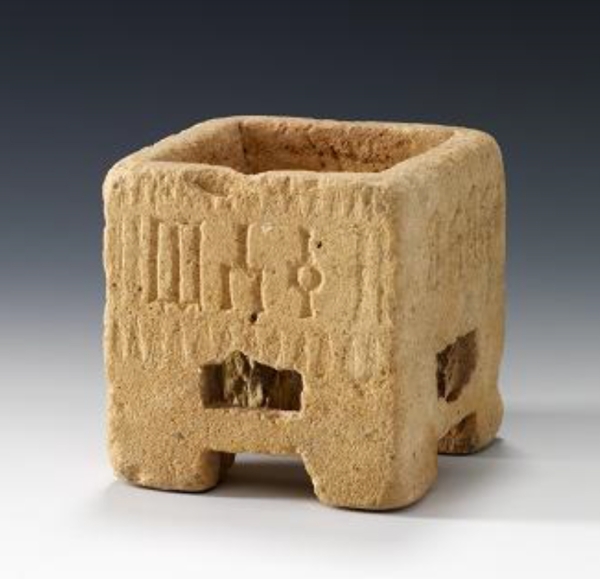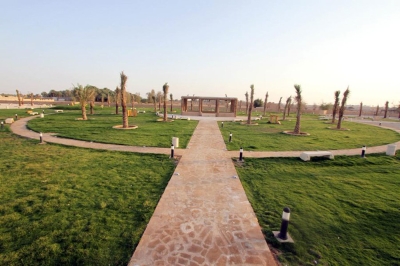

The Square Limestone Censer is a square-shaped incense burner carved from limestone, discovered in archaeological Qaryat al-Faw, located in the southeast Wadi ad-Dawasir Governorate in Riyadh Province of the Kingdom of Saudi Arabia.
Description of the censer
The square limestone censer consists of a deep basin with straight edges. One of the sides shows signs of breakage caused by an impact with a hard object. It is supported by four square legs carved at the lower corners, with bridges left by the sculptor connecting each leg to its opposite counterpart. All four sides of the burner are inscribed with South Arabian musnad script, engraved in a recessed frieze bordered by two carved lines. The inscription reads: (Lbni Kmkm Qst Hdk). Above the inscription, triangles with upward-facing points are carved and arranged horizontally in a continuous sequence, appearing on all four sides. Below the inscription, similar upward-facing triangles are carved, also arranged horizontally in a continuous sequence, and they appear on all four sides of the censer.
Dimensions of the censer
Height: Ten cm.
Width: Ten cm.
Length: Ten cm.
History of the censer
The square limestone censer dates back to between the third century BCE and the third century CE, and it was used for ritual purposes.
The burner is preserved in the Archaeology Department Museum at King Saud University in Riyadh. The square limestone burner is registered under the number 5 F 13. Its discovery is part of the results of archaeological surveys and excavations conducted by the Antiquities and Museums Sector in Saudi Arabia over the past years. It is one of the discoveries made by Saudi archaeologists, scientific missions, and joint research teams.
Censer at the Louvre
The square limestone burner is one of the artifacts selected to participate in the Saudi Archaeological Masterpieces Through the Ages Exhibition, held at the Louvre Museum in Paris in 2010. The exhibition showcased a total of three hundred original items from various periods and materials, originating from different regions of Saudi Arabia. These artifacts were categorized chronologically into three groups: artifacts from prehistoric periods, artifacts from pre-Islamic periods, and artifacts from Islamic periods.
Significance of the censer
This artifact represents a traditional model of square limestone censers used during that period for burning incense on special occasions. Such burners often bore the names of their owners or the aromatic substances they contained.
Related quizzes
Related articles
